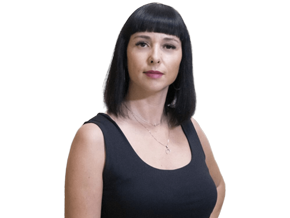The use of mortgage products in Spain is a common practice by acquiring housing among both natives and foreigners.
The first mortgage boom came in the country in the 70s of the XX century, when extensive construction of new residential buildings and facilities related to the development of the tourism sector were taking place. During this period, residents of rural regions started to flock to big cities in search of opportunities and higher earnings.
Cities such as Madrid, Barcelona and Bilbao faced the inflow of population in large part.
Thanks to the events described above, a naturally high demand for the purchase of housing, and with it for mortgages has arisen among new residents of cities and investors in tourist real estate. Initially, the developer and/or promoter offered housing for sale where the buyer bore the entire costs associated with the purchase. Agreements, or letras para los préstamos hipotecarios – letters of mortgage loans usually indicated the interest rate, the duration of housing loan and the amount of monthly payments, in turn condición resolutoria – a condition under which the buyer became the rightful owner of the home was entered the register. As a rule, this condition was a well-timed and full payment of the loan amount.
In the 80s, a set of documents required to gain a mortgage loan was finally formed, as well as a standard form of agreement. When engaging in a transaction, a notarial deed – escritura notarial began to be drawn up.
In the 90s, mortgage loans attained great popularity, and banks competed with each other, attracting with affordable interest rates or other improved conditions more and more new customers.
The global financial crisis of 2006-2014 cut demand for granting of mortgage loans. However, then the number of signed mortgage agreements began to grow again and as of 2017 exceeded 300.000. In 2020, there were already registered about 334.0000 mortgage contracts in the country for buying a house.
For the present, the mortgage market is influenced by its own factors. The fact is that Spain is experiencing the worst demographic crisis since the Civil War, according to a new report from the National Institute of Statistics. For example, last year recorded the highest number of deaths and the lowest number of births since 1941. The drop in the birth rate occurred by almost 6%, following the downward trend of the last decade. If we consider the data from 2010, then the picture looks even worse: the birth rate has dropped by 30%.
For example, last year recorded the highest number of deaths and the lowest number of births since 1941. The drop in the birth rate occurred by almost 6%, following the downward trend of the last decade. If we consider the data from 2010, then the picture looks even worse: the birth rate has dropped by 30%.
What does that have to do with mortgages, you ask?
And there is a relationship: due to the demographic crisis, a significant pension pressure fell on the Spanish budget. In this regard, since 2009 a special program has been created in the country, which was named hipoteca inversa – reverse mortgage. Its essence is that the owners of real estate in Spain can rent out their homes to the bank and receive dividends for this, including in the form of life-long revenue.
What types of reverse mortgages are there in Spain?
Pure Reverse Mortgage – Hipoteca Inversa Pura
In practice, this type of mortgage is a home equity loan.
For example, an individual has his own house, but he needs additional funds. As an owner of real estate, he can apply to a financial institution for a loan on security of collateral.
The bank gives him a loan in the amount of 50-60% of the property value, and the mortgaged apartment will act as a guarantee for return of funds.
After the period indicated in the contract, the private person is obliged to return the borrowed funds, or, in the absence of income, sell this property in order to pay off debts.
When the owner dies, his relatives have the right to inherit the housing, but at the same time, they are obliged to pay off the loan.

Reverse Mortgage with Deferred Life Income – Hipoteca Inversa con Renta Vitalicia Diferida
In fact, it includes two products at the same time: a bank loan against the house and a life annuity. First, the bank issues a standard credit to the client, which he undertakes to repay. Should death of the owner, his housing can be received by his heirs, along with financial obligations.
If the client has got time to pay off the loan during his lifetime, the bank will have to pay dividends to him: for example, about 200 euros will be transferred to the property owner’s account every month for an apartment worth 300.000 euros. And, although this amount seems insignificant, but it can be a pleasant pension bonus in the long run.
The advantage of a Reverse Mortgage with Deferred Life Income is that the borrower has the right to use the home throughout his lifetime. In addition, lifelong dividends are subject to preferential taxation.
Reverse Mortgage with Immediate Life Annuity – Hipoteca Inversa con Renta Vitalicia Inmediata
In this option, the client receives a bank loan, but all dividends that he is entitled to get from home equity serve directly to pay off the previously issued loan.
Should death of the property owner, his heirs will have to return outstanding debt to the bank. If the client fully paid its arrears, the credit institution will be obliged to transfer to his account the monetary remuneration (rent) every month and so on for the rest of his life.
If the real estate owner lives a long life, then throughout his life and until the end, he would be able to receive scheduled annuities and live in this house using the property right usufruct, which implies the right to use someone else’s – in this case, bank’s property with the right to appropriate income from it, subject to the maintenance of its integrity, value and economic purpose.
If the client dies prematurely, even without using a significant part of the life annuity, then his heirs will still lose the right to this property and will have to return to the bank the full amount borrowed to pay annuities.
Sale with the Right to Reside – Vivienda Pensión

In this area, the Spanish government has also developed its own interesting option, such as the sale of real estate with the right of the seller’s subsequent residence in the apartment (usufruct) and the provision of the possibility of concluding a lease contract. If the client uses the usufructuary right, then he will receive money and at the same time will be able to continue to use this housing for the rest of his life.
After the death of the property owner, a new owner will be able to take over the right to dispose of housing almost immediately. In reviewing long-term prospects, such a deal can be considered profitable, because the cost of acquiring such a home will be much lower than with ordinary sale and purchase. However, it is not known how long the new owner will have to wait before he can duly use this property.
The property value specified in such a transaction usually varies significantly depending on the age of the seller. If we are talking about a very elderly person, moreover, lonely and with diseases, then the price will be as close as possible to the market price, but still going with a good discount.
If the seller was barely retired, then, given the favorable life expectancy in Spain, on average, 82,3 years (2020) – such a deal can be very, very profitable for him. In addition, the sale of the main housing, i.e. place of the permanent residence, for persons over 65 years old is not subject to capital gains tax (the difference between the purchase and sale value).
Are there some benefits for the buyer? Of course! In Barcelona, for example, housing of 250.000 – 300.000 worth euros, based on this scenario, can be purchased for 60.000 – 70.000 euros. It is true that you can hardly move into your new home soon, but as an investment in the future of your children or grandchildren, this can be a great idea.
For the heirs of the property seller, the picture is far from rosy: they will not be able to inherit this housing or buy it out for the amount specified by the owner – they completely lose their right to this housing.
Sale without Accommodation – Venta de la Vivienda
In this case, the owner of the real property sells his home, and he himself will have to move to another place for permanent residence. This can be an option with a long-term stay with close relatives, in his own holiday house or in a senior center.
All the income received from the sale is deposited by the owner on a bank account. The financial institution reinvests and manages this money by paying the pensioner a fixed monthly amount. After the death of the property owner, his heirs will be able to receive this money.
Thus, this is another opportunity to use the money received from real estate wisely, and provide yourself with additional lifetime income. Really, by selling property, one needs consider carefully, where a new permanent residence will now be.
The buyer pays the full market value of housing, which guarantees the seller a good and stable annuities.
Moreover, such sale and purchase transactions and the investment of the received income in the life annuity will be carried out with the use of preferential taxation.
The only downside, perhaps, is that after the deal is concluded, the former owner will no longer be able to live in this house and bequeath it to his heirs. However, this fact is also applicable to ordinary buying and selling without mortgage fund raising.
Did you know about the existence of a reverse mortgage in Spain, would you like to use it? If you still have any other questions about a reverse mortgage in Spain, don’t hesitate to ask our specialists.



